| Columns Retired Columns & Blogs |
Deep listening :-) ..........
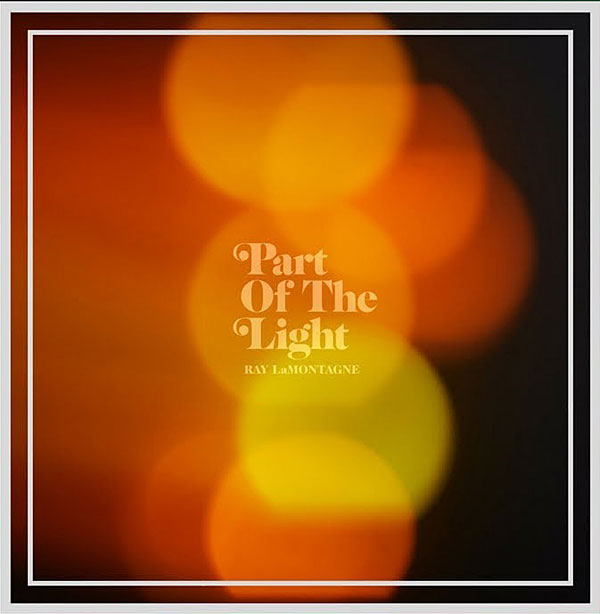
Ray LaMontagne: Part of the Light
RCA 19075837892 (24/96 download). 2018. Ray LaMontagne, prod.; Kevin Ratterman, eng. DDD. TT: 46:07
The way I figure it, Ray LaMontagne was dropped on his head sometime last year and woke up days later, thinking it was 1971, he was Pink Floyd, and he had to go into the studio right now and make an album. Granted, his guitar soloing never reaches Floydian genius level, but LaMontagne's sensual Americana tendencies mesh perfectly with this album's mellow Meddle-era vibe. His breathy, Gilmour-ish vocals wrap you in a pillow of winds, especially in the final track, "Goodbye Blue Sky," which stretches out to seven fearless minutes. Maybe Gilmour could join him on the road . . .
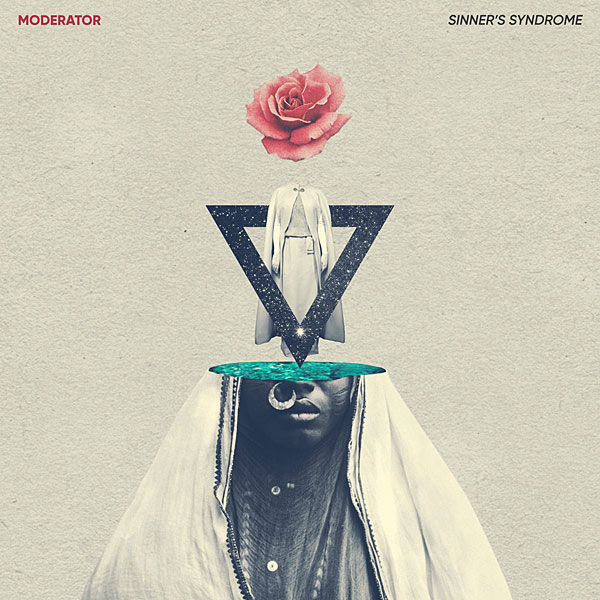
Moderator: Sinner's Syndrome
Melting (24/44 download). 2018. Moderator, prod., eng., mix. DDD. TT: 44:08
I'm a sucker for dreamy trip-hop, and this recent album pushes all the requisite downtempo buttons. Moderator, hailing from Athens, Greece, specializes in uncovering arcane but potent vocal tunes 50–60 years old. He then gives them the groovy DJ once-over, chopping and dicing, often with a twangy, Tarantino-esque twist. The centerpiece is a modern reworking of an obscure and creepy Dinah Shore song, "The Scene of the Crime," with drop-ins from Alfred Hitchcock and an updated rhythm section. I purchased my 24/44 HD download via Bandcamp, where a dozen more Moderator albums await on all formats, including vinyl.
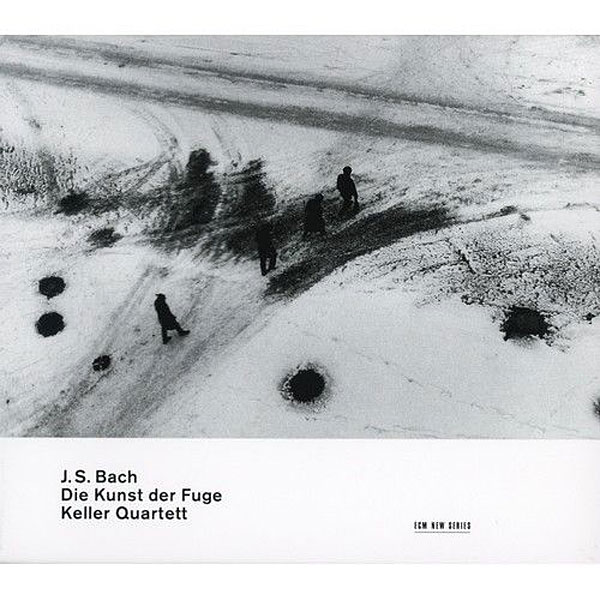
J.S. Bach: Die Kunst der Fuge
Keller Quartet: András Keller, János Pilz, violin; Zoltán Gál, viola; Ottó Kertész, cello
ECM New Series 1652 (CD). 1998. Manfred Eicher, prod.; Peter Laenger, eng. DDD. TT: 72:01
J.S. Bach's unfinished final work, or nearly final work, or late work abandoned in mid-phrase and never returned to—no one knows which—was composed for unspecified instrument(s) or no instrument at all, and many have thought it less music for the ear than music for the eye or mind. Its extremely abstruse, austere, and complex fugal qualities are difficult enough to hear, let alone coherently play, and the musically literate have often found them easier to trace on the page. Some have wondered if it is music at all, and not some other form of nonverbal information theory set down in dots and lines in an abstraction not of sound but of pure, unmediated thought or data—the raw code of some 18th-century software. In this sense, The Art of Fugue is ultimately not so much unplayable or unhearable as, in some crucial way, unlistenable. Not all who love or respect this music feel this way about it, but over the centuries, enough have that it has earned a reputation for daunting impenetrability, especially when played on harpsichord or piano or organ.
Little of that seems to apply to this recording, by the Keller Quartet of Hungary, of Hermann Diener's transcription of The Art of Fugue. Yes, there is still the sense of a preternatural rigor of form handed down from some other realm on tablets of contrapuntal adamant that reduces most commentators, including this one, to mystical mumblings about God's Thoughts, Basic Structure of the Universe, etc. Yes, this music never will be easy to listen to, or gladly suffer the uninformed or the impatient. But though the Kellers play almost entirely without vibrato, they do not play without vitality and living breath, and their precisely attuned attentiveness to some Higher Rhythm seems inerrant. They take some of these fugues quite slowly, others quite fast. Their delicacy and unity of ensemble playing is breathtakingly sensitive, even as the textures of the sounds of their instruments are dry, rich, gritty, cool, warm, gutsy, whether simultaneously or by turns.
Despite or because of all that, the results are almost alarmingly powerful, uncompromised by even the subtlest pandering to the usual nuances of musical pleasure. I'm not sure I will ever be able do anything as seriously and committedly as the Kellers turn Bach's thought into sound. It's not that they make this music more or less accessible; rather, their X-ray ears and fingers seem to reveal in it an entire history of Western music. Sometimes it sounds like the sparest of late medieval music, sometimes like Schoenberg or Webern—indeed, in this recording I hear for the first time the continuum with this work that those 12-tone serialists always claimed to be extending with their own compositions. All of it also sounds like J.S. Bach and no other.
The Keller Quartet presents the listener with a journey of bracing strenuousness through territory some might think they know well. The sound is spacious, its wetness the perfect complement to the dryness of their strings. These pleasures are keen enough to be easily mistaken for pain. Beware, and be glad.
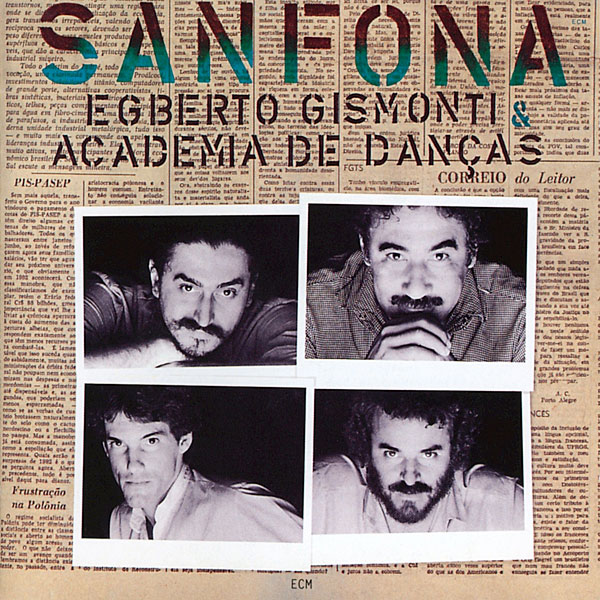
Egberto Gismonti & Academia de Dança: Sanfona
Egberto Gismonti, piano, 8- & 10-string guitars, Indian organ, sanfona, voice; Mauro Senise, soprano & alto saxophone, flute; Zeca Assumpção, bass; Nene, drums, percussion
ECM 1203/04 (2 CDs). 1981. Manfred Eicher, prod.; Jan Erik Kongshaug, Martin Wieland, engs. AAD. TT: 96:10
Richard Wagner famously described Beethoven's Symphony 7 as "the apotheosis of the dance." I wish he had lived long enough to hear this other perfect exemplar of the terpsichorean, by the Brazilian jazz musician Egberto Gismonti. In addition to his usual guitars, piano, and occasional vocalizing, Gismonti here plays the sanfona, a small piano accordion.
Disc 1 is performed with Gismonti's quartet ca 1980, the Academy of Dance. It's difficult to imagine four musicians playing any more perfectly together—unless it be the Keller Quartet playing J.S. Bach's The Art of Fugue. The rumble of Gismonti's piano and Nene's bells in the opening "Maracatu" presage a long journey up an endlessly bending river of sinuous saxophone sound. "Lôro" is a miracle of delightfully nimble-footed time; as the tempo of its long coda steadily, gradually slows through chorus after chorus, the four players never lose their lightly held perfection of lockstep until all halt together on the tiniest, thinnest of Brazilian dimes. This is joyous and challenging music played as if it were nothing at all.
Disc 2 is Gismonti solo, on a different journey, one more dark and inner. His guitaristry sometimes reminds of Ralph Towner on 12-string, had Towner grown up in Gismonti's hometown of Carmo playing 8- and 10-string. The heart of this disc's varied darknesses is "Vale do Eco," Gismonti adding to his keening sanfona his own voice as, together and alone, they sound out in what seems the vastness of space. I know of no other accordion music like this: primeval, modal, bitonal, a shamanic cry of the soul in music that, moment to moment, is as unpredictable as it sounds inevitable.
That's just the beginning of the riches of a generously long recording that is a working definition not only of audible dance but of clarity: the sounds of human bodies making wood and string and brass and reed speak in their own untranslatable tongues, sounds given enough space to be heard registering in and on that space as it in turn responds to them, before it all travels on to grateful ears. Music.
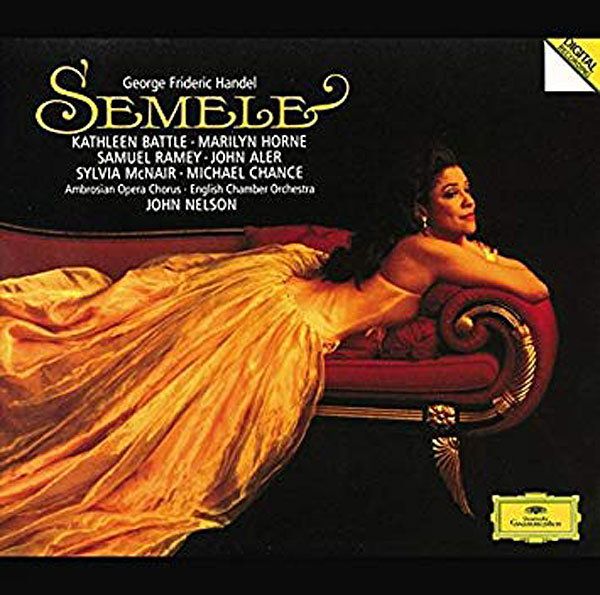
Handel: Semele
Kathleen Battle, Sylvia McNair, soprano; Marilyn Horne, mezzo-soprano; Michael Chance, countertenor; John Aler, tenor; Samuel Ramey, bass; Ambrosian Opera Chorus, English Chamber Orchestra, John Nelson
Deutsche Grammophon 435 782-2 (3 CDs). 1993. Dr. Steven Paul, prod.; Helmut Burk, eng. DDD. TT: 2:54:37
This opera/oratorio (designated the latter, it plays as the former) is among Handel's greatest, tightest, most entertaining works. The vain Semele wants to "experience" the full glory of Jupiter, not in his human form but as The Mighty One. His jealous consort, Juno, eventually wreaks havoc by disguising herself and egging Semele on. Semele nags so thoroughly that Jupiter complies—and Semele is burnt to a crisp, leaving her weak betrothed, Athamas, miserable, until he opts to marry her sister, Ino.
Conductor John Nelson not only eschews period instruments but uses dyed-in-the-wool opera singers: Kathleen Battle as the vain Semele (her aria "Myself I shall adore" is surprisingly naïve); Marilyn Horne as Juno and Ino, superbly differentiated, with her staggering agility and dark, low notes ablaze; smooth, dark-toned Samuel Ramey as both Semele's father, Cadmus, and Somnus, god of sleep; Michael Chance as the vaguely abused Athamas; and John Aler, using his graceful tenor—which could use more force—as Jupiter: his "Where'er you walk" is ravishing.
Nelson gets beautifully articulated "period" playing from the modern players, tempos are swift, and the opera is given complete. Sound, thunder included, is vividly alive.
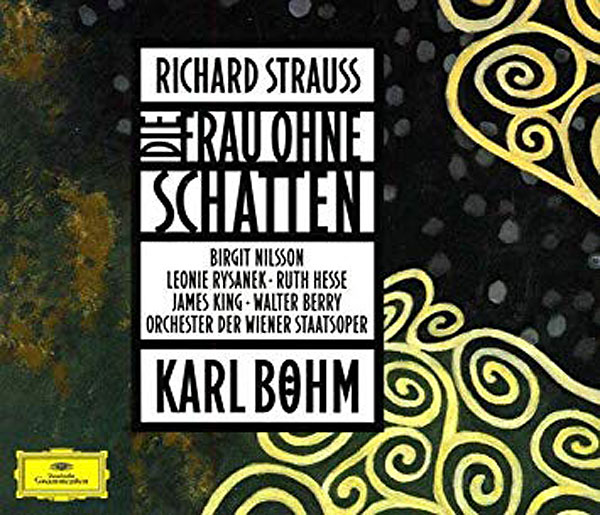
Strauss: Die Frau ohne Schatten
Leonie Rysanek, Birgit Nilsson, soprano; Ruth Hesse, mezzo-soprano; James King, tenor; Walter Berry, bass; Vienna State Opera Orchestra & Chorus, Karl Böhm
Deutsche Grammophon 415 472-2 (3 CDs). 1977/1985. ADD. TT: 2:55:05
Frosch, as it's known to those who love it, is Richard Strauss's most gigantic opera. Coming in at over three hours (this performance is slightly abridged) and calling for an orchestra of over 150 players (plus chorus), five huge solo roles and eight more minor ones, and with a heavily symbolic libretto by Strauss's longtime collaborator, Hugo von Hoffmansthal, it's a phantasmagorical trip both textually and musically, a vortex one gets into early and can't escape. It concerns a mythical childless Empress and the evil Nurse who tries to manipulate the Shadow (the ability to have children) from a "lowly" human couple, and examines the natures of love, power, cruelty, and kindness. The music, which ranges from tonally ravishing to wildly dissonant, fascinates and stuns. The sound world is filled with bells, celesta, 10 trumpets, a whip, gongs, sleigh bells, wind and thunder machines, and more than the usual complement of instruments. The climaxes are gigantic, the tender moments quiet and heart-rending. Two Wagnerian-voiced sopranos, a heldentenor, a dramatic mezzo, and a grand-voiced baritone make up the lead singers. Once the favorite of specialists, Frosch is now close to the mainstream, and this performance, recorded live at the Vienna State Opera in 1977 in brilliant sound, is led by Karl Böhm, who owned it in the 1950s, '60s, and '70s, all over the world. And just look at the cast!
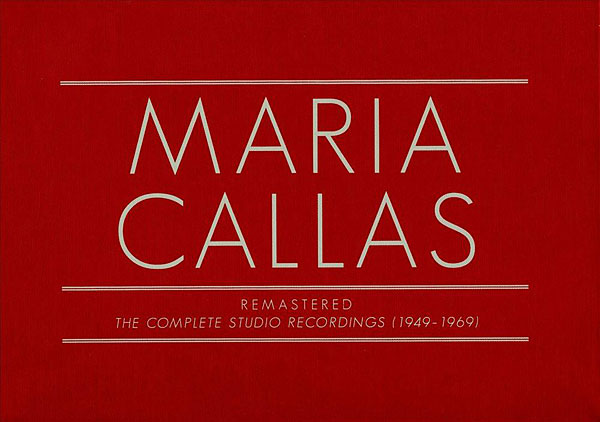
Maria Callas: The Complete Studio Recordings
Warner Classics 633991 (70 CDs). Walter Legge, others, prods.; Simon Gibson, Allan Ramsay, Ian Jones, remastering. AAD. TT: 65:32:53
There are many fine boxed sets—and then there's Maria Callas: The Complete Studio Recordings. This big, bright-red treasure chest is in the stratosphere! All of Callas in the studio, from 1949 through 1969, is here—70 discs in all. There's a fine, informative book with excellent photos, handsome reproductions of album covers, great Abbey Road A-team remastering—it's all first-rate. And the music is beyond compare. If you happen to run into Pallas Athena in a Greek temple, I'm sure she'll look a lot like Maria Callas—and when she starts singing, she'll sound like her, too. All we mere mortals can do is bow down. La Divina!
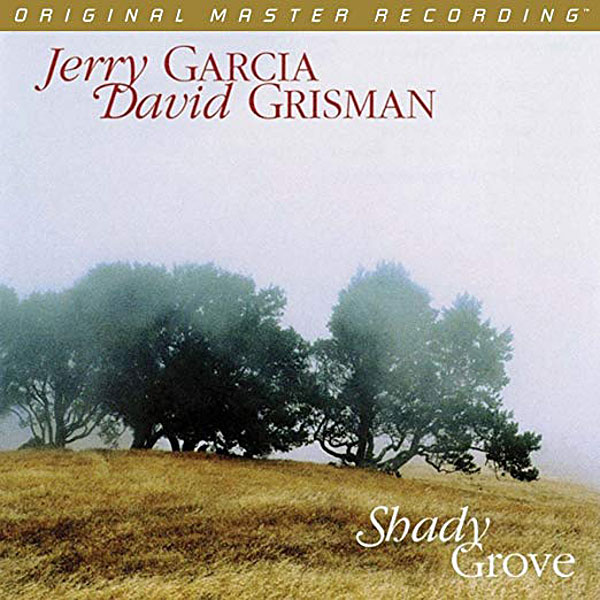
Jerry Garcia & David Grisman: Shady Grove
Jerry Garcia, guitar, 5-string banjo, vocals; David Grisman, mandolin, guitar, 5-string banjo; others
Acoustic Disc/Mobile Fidelity Sound Lab MFSL-2-478 (2 LPs). 1996/2017. David Grisman, Jerry Garcia, prods.; David Dennison, eng.; Krieg Wunderlich, mastering. AAA. TT: 64:24
Jerry Garcia came full circle in his musical life. In his last years, he spent quality time recording mostly old-time traditional songs with longtime buddy David Grisman, in the latter's excellent personal studio. After Garcia's death, in 1995, Grisman released a first selection from those sessions, Shady Grove. These heart-rending analog recordings always sounded gorgeous, but at first were available only on CD. Now MoFi has done a beautiful job of mastering them as two 33rpm LPs. The title song and two others are also included on the recently released Jerry Garcia: Before the Dead, with performances dating back to 1962 and 1963. For Garcia, the circle remained unbroken. (Vol.20 No.3)

Deep listening :-) ..........

Some added info:
For Jim Austin's great choices...
1) The Paul Desmond Quartet album can be had on CD, "remastered" in 2015, on a disc called Paul Desmond Quintet & Quartet "Here I Am" that has two albums on the disc, and includes the full album Mr. Austin mentions.
https://www.amazon.com/gp/product/B011VX0K4A/ref=ppx_od_dt_b_asin_title_o00_s00?ie=UTF8&psc=1
2) If you really wanna Hi Fi up on the Count Basie and the Kansas City Seven album in the digital realm, the Esoteric SACD from their "6 Great Jazz, Impulse!" set is pretty awesome. (It's my favorite digital verson.)
http://www.esoteric.jp/products/esoteric/essi90133_38/indexe.html
All the discs in that set are great. My wife swoons for the Coltrane Ballads album, and the John Coltrane and Johnny Hartman is an all time classic. The set is very worthwhile, I feel.
My only criticism of Jim's entry is that he failed to mention the "Wines To Die For" he was opening when he mentioned sipping!!!
Cheers!

Anton, does the Count and Coltrane really sound that much better on the Esoteric SACD?

This being subjective and all...I think they do.
I can hear so far into the Count Basie, it's spookie. There are some studio sounds way way down inside that still make me look around for people when I listen in the dark.
I think the set offers good value.

What hardware are you using? I am a late adopter to SACD.

I have an Esoteric DV50 that Alex Peychev modded. He used to do it via APL Hi Fi and I have heard nothing in the past decade to move me away from it! I think he was very early on the scene with clocking mods and such.
Also, a couple of Oppo UDP-205 players that I just can't say enough good things about for the price.
Also, some 8+ year old Marantz players whose model numbers escape me and I am not at home.
This is a generalization, but...I think I find that SACD players have done a better job with redbook CD playback for me, as well.
I really pray SACD remains, I have found great joy in those discs.

Let me know which Marantz players you like, been looking at the $1k Yamaha player and the soon to be released Technics one. I too hope SACD survives despite not caring for it much when it first came out.

Robert Schryer absolutely has his finger on the pulse of greatness with his Bruce Cockburn choice. "Dust and Diesel" is my favorite track on that great album.
Sticking with Bruce...his oeuvre is immense!
"Nothing But A Burning Light," "Charity Of Night," "Dancing In The Dragon's Jaws," "Big Circumstance," "World Of Wonders," "Breakfast in New Orleans, Dinner in Timbuktu," "You Pay Your Money And You Take Your Chance," well, I was going to mention a few other great Bruce LP's, but how do we slice his awesomeness?
Solidly desert island artist territory there.
Thanks for picking Bruce!
What a Mt. Rushmore of guitar skill he has, as well.

That's the hardest part of narrowing down the list!
All good!

You can still grab a decent, original mono or stereo copy of this title for semi-reasonable $ - they sound great -

Yes, even though the movie is only good, not great, I find myself watching Kingdom of Heaven over and over, simply because the score is so beautiful!

This years are the last scrapings of bottom of the barrel. With previous years I discovered some music I found great or at least interesting. Sad!

146 characters.
If we had to go 140 characters...
This year's are the last scrapings of bottom of the barrel. In the past, I discovered some music I found great or at least interesting. Sad!
There! 140 characters! You are now Presidential!
;-D

Anton ...... Best comment I have read all day ......... You made my day and thank you .:-) ........

Imagine my country if Twitter had been based on a 17 syllable 5/7/5 format of political communication.
Converting Twitter style to Hi Fi haiku...
Barrel’s last scrapings.
Was much better in the past.
Now not great, so sad.

you trumping it! Why one can not express ones opinion without been trolled

"Choices" .......... George Jones :-) ..........

Some say R2D4 is now passe.
It used to rule (back in the day).
They maintain this year's is very bad
And that for me is awfully sad.
Next up, Recommended Components (oy vey)

Hopefully AD would write more polite commentary for the recommended components list (oy vey) :-) ........

https://www.youtube.com/watch?v=piH5iSPPOpY

Tyll, you forgot Tyll dammit. How could you forget Tyll? Tyll is a Giant.
and you forgot...
... Steve Guttenberg!
Steve Guttengerg ( Steve G. ) and Paul McGowan are making significant contributions to the supply of accurate information about all things Audiophile ( especially affordable audio ) , as is the now blooming Kal Rubenson in his explaining of the immersive audio experiences.
Herb R brings the reader into the room and has him share his experience. Herb could be a Michael Connelly and is Audio's all time Great, readers 100 years from now will read Herb and feel the exact same experience that we feel as we read Herb's writing fresh. HR is No.1 with words and prose.
Bob Katz belongs in the Greats List, he's easily the most Credentialed Audiophile Evah!,
Tony in Michigan
ps. I'm not including any Advocates in my listings, a good many Reviewers have obvious Commercial Relationships. Paul McGowan is PS Audio and is my only exception, Paul is a man of Integrity that I've known since 1982
ps. I can't accept the agenda writers, agenda writers are paid to support and will dismiss or diminish defects, even ignore glaring problems. Agenda writers are selling product. example: Tube Gear that eats tubes, Vinyl systems that cost the price of a House. Today, Vinyl is a Collecting and Hoarding hobby based on it's history of being part of the Audiophile Hobby. Vinyl electronics are designed and made to make Vinyl sound good. I was a Vinyl guy.

It all comes down to what is pleasurable for the listener.
You don't have to spend a gazillion bucks to have a rewarding vinyl setup. I own a Rega P5 equipped with an Audio Musikraft / Denon DL-103 catridge, which I tend to listen to more regularly than I do my more technologically modern Bryston BDP-1USB streamer / BDA-2 DAC. The latter, for whatever reason, is marginally less involving musically for me than my analog rig.
Don't forget, Tony, that cars and bikes and parking meters are all based on old technologies that keep getting refined. Just like turntables.

..when record (later known as vinyl, please not to be confused with cheap cd plastic) loyalists proudly declared superiority of all things analog as a backlash to the humiliating “perfect sound forever” new digital age chant. Man, hadn't it been so embarassingly difficult for one to simply indulge into one’s miserable little habits with no wish to make the rest of the world appreciate and applause!

I'm not referring to you, you should present a review of your P5 or your Wires or Amplifier or just write about being an Audiophile in Eastern Canada ( fascinating )
I'm referring to the Vinyl Shrine Reviewers.
I own Vinyl.
Vinyl playback has an "Electrified Air" quality about it. Those sizzling lead-in grooves set-up a person's nervously thrilling expectation. Vinyl people have synapses connecting to deliver a dopamine High, that build a memory, reconstructing with the sound of the needle finding the groove. The Brain never quite forgets it's vinyl wiring circuits. All music works this way, it's whats delightful about Singing and playing music.
Vinyl is 100% a "hands-on" experience, there is no Auto Pilot in a vinyl system. It's like flying an older Multi-Engine Aircraft where the busy Pilot is adjusting all aspects of a very complex system. Not for Everyone and it's an entirely different type of experience, well apart from enjoying music itself. Playing Vinyl is something you learn to Master from being a part of a peer group.
A cantankerous Vinyl system, i.e. LINN LP12/Ittok/Koetsu, AudioResearch SP9, Amp & Quads is a hell-of-a Vinyl system, probably $10,000 Used from StereoExchange but it still needs a useful record cleaning machine. Then comes the Record Collecting ( great if you live in Brooklyn,NY ) A wonderful hobby in itself. It's a fully hands-on participation, needing significant monthly financial commitment in a USA where the bottom 50% of the population are POOR, working multiple jobs, no health insurance and struggling on a paycheck to paycheck Basis. So, for many aspiring audiophiles, a $50,000 Magazine Front Cover Product is a Hubristic middle Finger Statement.
Stereophile & JA do provide a useful service to our financially challenged. Mr. HR writes directly to a greater population of disadvantaged Music Lovers, as does Steve G. & Tyll ( long gone ).
Tony in Michigan ( getting our first Snow of the Season )

I agree with much of your comment, Tony. However, not sure that me writing about life as an audiophile in Eastern Canada is going to enthrall a predominantly American audience.
BTW, I'm surprised you didn't add your own special memory to my latest AWSI; I peg you as someone who has a gazillion memories, especially considering your lengthy stint in audio retail.
Why don't you regale us with a story?

Telling your Story is exactly what makes Stereophile wonderful.
It's kinda like Walking into a Audio Salon where someone is carefully listening in the Big Audition Room and you join-in. Later you discover the magnificent performance is coming from some small Loudspeaker, not those Big MG3 Magies. Wow, a Story!
You have plenty to say and the ability to say it. You are our Stereophile Foreign Correspondent. Your point of view is an important ingredient to the Larger Audiophile Experience. Your experiences widen-out the Image that Stereophile projects, you bring important dimensionality to what all of us are enhancing our lives with. Your "Voice" brings Clarity and Focus. You've been given a Podium and I'm delighted with JA for it. You're part of the reason JA has his own following and reputation.
Tony in Michigan
ps. of course, everyone has stories but few have the ability to tell them, It takes multiple proof readings and at least one proof reader. ( are you proofing me? )

..way of expressing yourself, Tony. Your writing sticks out. It is immediately recognizable. It is you. I do not feel compelled to "proof" you or otherwise judge your writing style because it is exactly as it should be.
"You're part of the reason JA has his own following and reputation." Yeah, I know. John's been riding my coattails for a while now, but I'm glad to have given him his big break in the publishing biz. He's a good man.
As usual, thanks for your support, Tony.

Proof reading isn't judgmental, isn't critique.
Proofing is Building, it's constructive, it's enhancing.
It's a successful thing to have a 1st. Proof reader ( like a wife ) and then have 3 additional successive Proof readers to make the writing presentable to the intended audience. Proof readers will transform a writing person into a Steven King! --- then look-out world!!!
The Manufacturing World will always have multiple proofers refining the processes. ( ad infinitum )
Tony in Michigan

Tony, why can't we be all natural and write the way we feel? This is only the internet and all, you know. btw I checked your post on Grammarly. It gave your writing 70 (out of 100).
BillyC

I don't have an idea how those records sound. They are probably good but very much doubt I'd die for owning them. Because in my experience no audio recording is perfect. There are so many parameters affecting a recording that no audio engineer can capture them perfectly. That said, I've come across an old recording recently that blew my mind. I had downloaded an hour-long audiophile (?) YouTube music video that some DJ compiled. There was a song in the video sang by a baritone (didn't have a clue who the singer was but after I uploaded the video on YouTube, UMG on behalf of Roy Rodger's estate claimed the copyright) singing a version of the old tune 'I Don't Hurt Anymore' accompanied by acoustic guitar and bass. I never heard a voice recording so realistic and wonderful in my life. It's what I call 100% transparency. You guys need to check it out. Oh, don't forget to wear your headphones (and the Focal Beryllium tweeter looks yummy). Here is the link:
https://youtu.be/bqLn2ibgHD4

The rules say that R2D4 records must be (or have been) in print and available in the US. Mr. Damkroger interprets this liberally when he offers up the Kubelik Vienna Philharmonic's LP of the Dvorak 9. Originally pressed by Decca and issued on the London label in the US, both are long out of print. Used ones are always available, though near mint copies are rare and command high prices. I am not aware of a reissue that is readily available. Please advise if I have missed it.